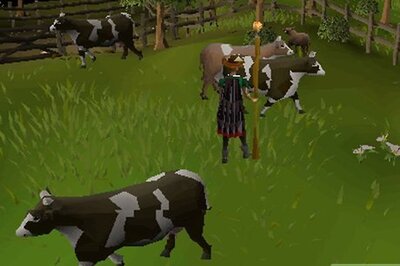
views
Seated in ardha-padmasan position on the floor of the mandapam in Vyloppilli Samskriti Bhavan, Chamu Krishna Sastry is at ease. He talks about his vision of spreading the popularity of Samskrit, in India and across the world.
Sastry, who was born in Puthur village near Mangalore, learnt Samskrit from Tirupati Sanskrit College and, along with some of his friends, went on to start the ‘Speak Sanskrit’ Movement in 1981.
“At that time people no longer thought of Sanskrit as a spoken language,” he said. “We wanted to bring it to everyday life as a medium of education, trade, administration, entertainment etc.”
The movement has evolved into the not-for-profit organisation Samskrita Bharati, which is active all over India and in 13 countries including USA, Japan and UAE.
For a language to be alive, six components are required, according to Sastry. “These include the speakers, contemporary literature, use of the language as medium of everyday transactions, generation of new words, adaptation and patronage,” he said. “In the case of Samskrit, we are now working to fulfil the first requirement (speakers).”
He would like to see more families take up Samskrit as a mother-tongue with the idea that command over language is acquired and not learnt.
“Over the past 32 years, we have taught Samskrit to over ten crore people,” he said. “Five thousand families are bringing up their children with Samskrit as first language.”
Sastry’s son, Siva, a seventh standard student, has also been brought up in a world of Samskrit.
“Because of Samskrit, he finds it easier to learn other languages and is fluent in five languages,” he said, adding that Samskrit was not difficult to learn as most of the other Indian languages have their roots in Samskrit.
No other language, Sastry argued, has more word generating potential or the ability to convey subtle ideas as Samskrit does.
“You know ‘paap’ becomes sin in English but what is the English equivalent for ‘punya’?” he asked to reiterate his point.
Dwelling on the same point, he further clarified, “Also it should be Samskrit, not Sanskrit. Though neither ‘m’ or ‘n’ can get the correct pronunciation, ‘m’ is closer to the right one.”
Sastry spends most of his time on teacher training, workshops, making of learning material and discussing Samskrit education with policy makers.
“Not just Samskrit as language, but modern subjects like chemistry, maths, history etc should also be taught through Samskrit,” he said. “Till now Samskrit has only been seen from a spiritual or religious perspective; it is high time Samskrit is approached from a scientific point of view as well.”




















Comments
0 comment